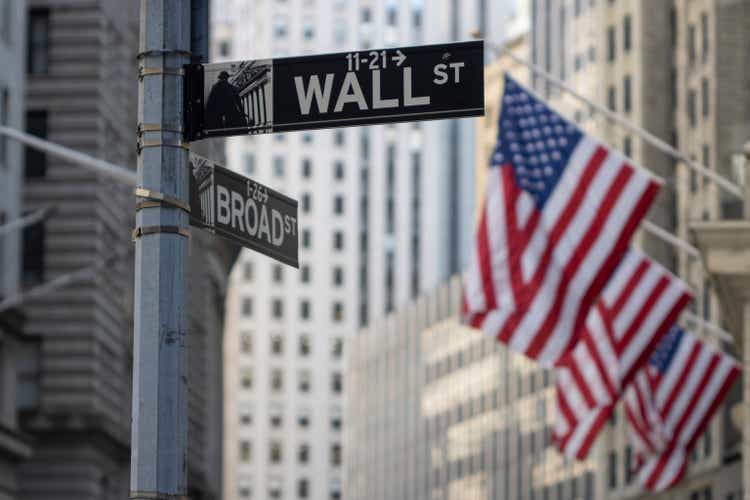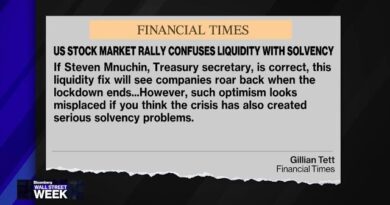Nasdaq, S&P eke out mild gains; UnitedHealth, Boeing weigh on Dow (SP500)
hapabapa
Despite feeling pressure for most of Friday’s trading, the Nasdaq and S&P 500 were able to drift into positive territory before the close, with investor sentiment fortified by the release of wholesale inflation data. Meanwhile, the Dow finished off its lows of the session but ended with a modest loss, hurt by an earnings-related slide in UnitedHealth (UNH).
An unexpected downtick in producer price inflation provided a source of optimism on the session, although this was largely overshadowed by a jump in oil prices and a fall in shares of airline companies and health insurers. Bank stocks were also in focus amid a rush of earnings from the sector.
The tech-heavy Nasdaq Composite (COMP.IND) edged up fractionally to close at 14,972.76, while the S&P 500 (SP500) rose by just under 0.1% to finish at 4,783.83. The blue-chip Dow (DJI) slipped 0.3% to close at 37,592.98.
“The major equity indices are trending sideways at the highs. Typically, this indicates some form of institutional distribution. To our wizened old eyes, the Russell 2000 (RTY) is midway through a short-term correction, the Dow (DJI) is thinking about following suit and we believe the S&P 500 (SP500) may do so too,” Alex King, investing group leader of Cestrian Capital Research, told Seeking Alpha.
“We remain bullish for 2024 – it’s an election year after all – but for now in our staff personal account index ETF positions we are either fully hedged (S&P 500, Nasdaq) or net short (Russell 2000, Dow) – in case of further short-term weakness,” King added.
Delta Air Lines (DAL) experienced sharp selling pressure, after issuing profit guidance below its long-term target. The warning rattled rivals, with United Airlines (UAL) and American Airlines (AAL) also sliding.
The underperformance of the Dow came as UnitedHealth (UNH) retreated more than 3% in the wake of its quarterly report. The managed care giant’s higher medical costs offset its quarterly top- and bottom-line beat. Peers such as Humana (HUM) and CVS Health (CVS) were affected as well.
Also weighing on the Dow (DJI) was Boeing (BA), which extended its weekly decline as the fallout continued from an accident involving a blown door plug on a 737 Max 9 aircraft last Friday.
Financials received significant attention during the day amid earnings from industry bellwethers JPMorgan (JPM), Citigroup (C), Bank of America (BAC) and Wells Fargo (WFC).
Energy gained ground, after WTI crude oil futures (CL1:COM) jumped as much as ~3% amid tensions in the Red Sea after U.S. and British airstrikes in Houthi-controlled areas of Yemen. Oil moderated its gains later in the day, but still rose more than 1% on the session.
Before the opening bell, the U.S. Bureau of Labor Statistics said that the producer price index (PPI) for December 2023 edged lower by 0.1% M/M, compared to a consensus for an increase of 0.1%. Core PPI, which excludes food and energy, was unchanged, versus an anticipated rise of 0.2%.
The inflation data was in contrast to Thursday’s hotter-than-expected consumer inflation report and underscored the bumpy path to the Federal Reserve’s 2% target.
The shorter-end more rate-sensitive 2-year yield (US2Y) saw a significant reaction to the PPI data, falling almost 11 basis points to 4.15%. Longer-end maturities were more muted, with the 30-year yield (US30Y) unchanged at 4.18% and the 10-year yield (US10Y) down 3 basis point to under 3.95%. Notably, the yield curve between the US2Y and the US30Y un-inverted on Friday morning.
See live data on how Treasury yields are doing across the curve at the Seeking Alpha bond page.
“After the CPI yesterday and PPI today, I’m pretty confident that the core PCE deflator rose at a 2.0% annualized rate in Q4. Job done. Cuts rates now please,” Pantheon Macro’s Ian Shepherdson said.




